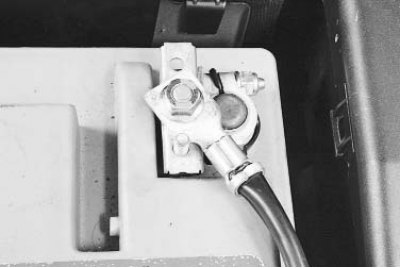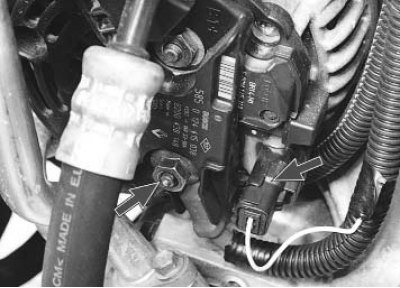
1. Check for a broken accessory drive belt. If there is a break, replace the belt (see «Replacing accessory drive belts») and adjust its tension (see «Checking the tension of the accessory drive belt»).
2. If the belt is intact, check and, if necessary, adjust its tension (see «Checking the tension of the accessory drive belt»).
Note. The manufacturer recommends checking the tension of the accessory drive belt using a special strain gauge tester. The tension in this case is measured in conventional units. If there is no tester, use the rule «thumb», pressing on the belt branch with your thumb and determining the deflection with a ruler. According to this universal rule, if the distance between the centers of the pulleys is 180–280 mm, the deflection should be approximately 6 mm, and if the distance is 300–400 mm, then the deflection should be 13 mm.

3. If even after tensioning the belt, the warning light is still on, check the wires connected to «positive»...
Note. The protective cap of the terminal has been removed for clarity.

4....and «mass» battery terminals...

5....to the starter...

6.... and the generator. Wires can be broken, broken inside the insulation, or with oxidized or unreliable contacts. Repair the problem and start the engine. If the charging current appears, you can continue driving.
If, after the measures taken, the charging lamp continues to burn when the engine is running, then the possible cause of the malfunction lies in the generator itself. There may be several reasons and it is better to eliminate them in a car service or garage, and you can only hope that there is enough energy in the battery to get to them.
Note. In order to reduce current consumption when driving a car with a faulty generator, if possible, turn off the radio, unnecessary lighting devices, heater fan, rear window heating, etc.
